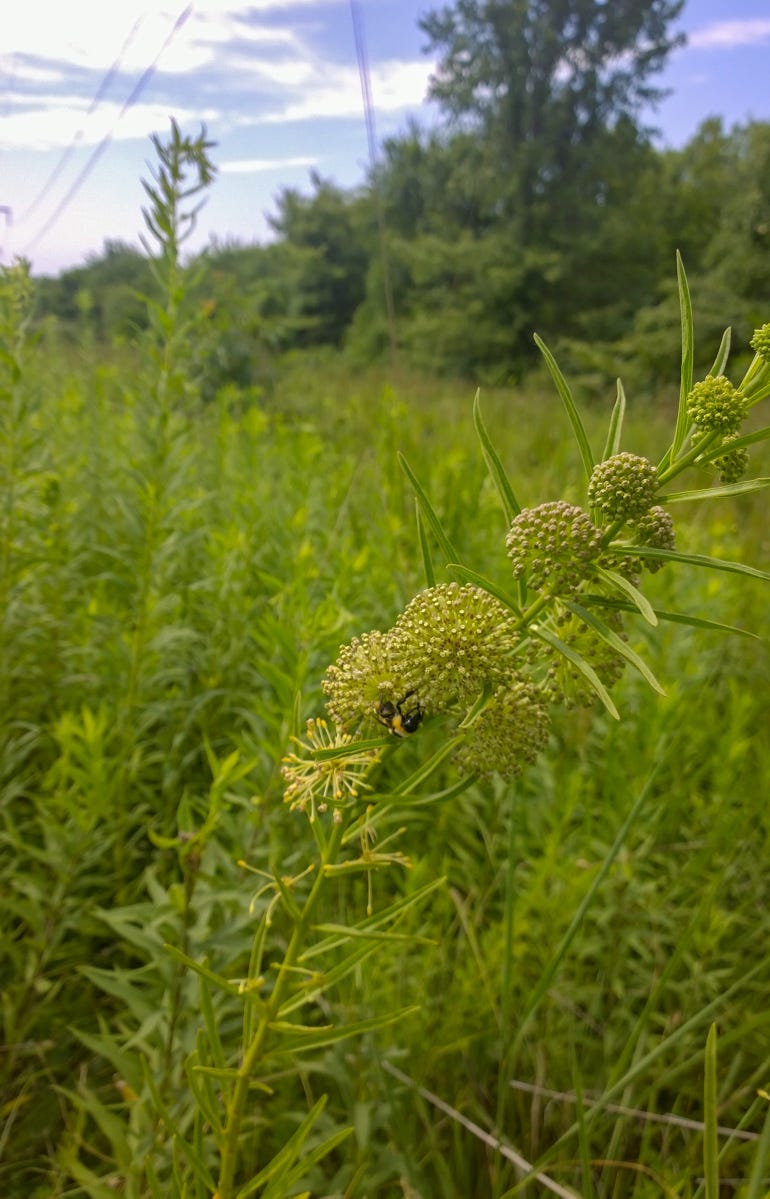April 23, 2020

Milkweeds are a great food source for monarch butterfly caterpillars and a source of nectar for bees, butterflies and other insects.
Milkweeds grow well in the garden, but each species has its own sun and soil moisture requirements to grow well. There are exceptions, such as common and marsh milkweed, which grow well in a variety of soil types, including wet and dry clay soil. The rest have more specific garden requirements for success.
Here is a list of milkweed species that are worth growing and are available commercially and perform well in Missouri:
Tall green milkweed. This species is a clump-forming perennial that grows wild in tallgrass prairies. It has creamy white flower clusters along the sides of erect 3- to 4-foot stems. Leaves are long and narrow resembling those of prairie blazing star. In gardens, plants prefer well-drained or sloping sites.
Marsh or swamp milkweed. It is a clump-forming perennial growing 3 to 4 feet tall. It is a wetland species that tolerates poorly drained clay soils with low oxygen. It also tolerates periods of drought and is an ideal rain garden plant (rain garden soils fluctuate widely from wet to dry). Pink flower clusters attract a wide variety of pollinators and predators in late summer. Monarchs frequently lay their eggs on this species. It sometimes is short-lived and performs best in full sun and moist soils.
Aquatic milkweed. An emergent aquatic species that grows at the edge of water in full sun to part shade, consider planting it at the edge of a pond or in a pot submerged in a water garden or small pond. It can grow in water up to 18 inches deep or in soil that is permanently saturated. Its flowers resemble marsh milkweed but tend to be more white than pink.
Purple milkweed. As a woodland perennial growing 3 feet tall, purple milkweed grows in open woodlands, woodland edges, and occasionally prairies and glades. It is sought after by gardeners for its fragrant reddish-purple flower clusters that bloom in early summer. It is one of the top butterflies and pollinator attractors. It performs best in light shade and dry-to-average, well-drained soils. Plants usually are clump-forming, but occasionally seedlings will sucker moderately.

ADD HEIGHT: Tall green milkweed dots pastures across Missouri. It will draw the eye toward the sky when incorporated in a farm garden.

Sullivant’s milkweed. This milkweed species is a moderately suckering perennial growing 3 to 4 feet tall in wet prairies. Its flowering stems are widely spaced, appearing by surprise 5 to 10 feet away from parent plants. Because it meanders in gardens, it makes an excellent choice for green mulch and designed plant community gardens. It looks like common milkweed, but not as aggressive. Flowers are pink with salmon-pink leaf veins. It performs best in full sun in wet to average soils.
Common milkweed. Offering fragrant flowers in mid- to late summer that attract a variety of pollinators and predators that ambush the pollinators, this species is a moderate-to-aggressive suckering perennial growing 3 to 4 feet tall. Its flowering stems are widely spaced. It grows wild in tallgrass prairies, along roadsides and at the edges of farm fields. It is a preferred milkweed of monarch butterflies, which lay eggs on the leaves. It performs best in full sun but tolerates partial shade. In partial shade, it is less aggressive but also flowers slightly less.
Butterfly milkweed. Another clump-forming perennial, it grows 2 feet tall with orange to reddish-orange flowers in summer. It grows wild in dry prairies and sloped roadsides. In gardens, it requires well-drained soils and can be a successful garden plant, although likely half the gardeners I know report having poor success growing this species. It is a top butterfly and pollinator attractor and performs best in full sun and dry soils.
Spider milkweed. This is a lesser-known species among gardeners, but well worth considering. It performs best in full sun and well-drained dry or rocky soils. It grows in dry prairies and roadsides. It has the largest flowers of Missouri-native species with greenish-yellow flowers and purple speckles in early summer. Spider milkweed also is a clump-forming perennial, growing 1 to 2 feet tall.
Whorled milkweed. This plant is sometimes considered aggressive by gardeners, although it is slow to get established. It is a suckering perennial that is 1 to 2 feet tall. It colonizes in full sun, less so in partial shade. Its flowering stems emerge densely from the ground, hence the other common name — horsetail milkweed. Its stems are upright with narrow leaves and tiny greenish-white fragrant flowers in clusters along the stem in late summer. It performs best in full sun to part shade and dry-to-average soils.
Woodbury is the curator of the Whitmore Wildflower Garden at Shaw Nature Reserve in Gray Summit, Mo. He also is an adviser to the Missouri Prairie Foundation’s Grow Native! program.
About the Author(s)
You May Also Like




